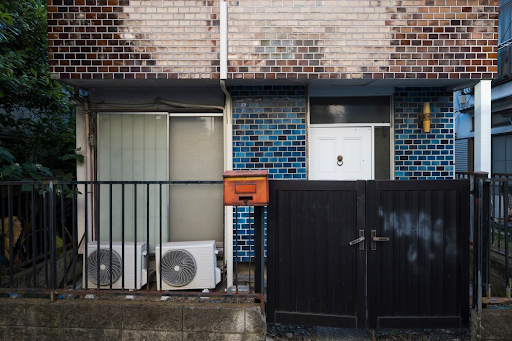Your home's HVAC system is essential for maintaining indoor comfort year-round. But have you ever wondered what components work together to heat, cool, and ventilate your space? Most people do not. Thus, when something goes wrong, they think they have to replace the whole system instead of just a specific component.
From the furnace and air conditioner to the ductwork and thermostat, each part plays a crucial role in regulating temperature and air quality. Understanding these elements can help you make informed decisions about maintenance, repairs, and energy efficiency. So, let’s dive into it.
Main Components of an HVAC System
The main components of an HVAC system range from AC to copper tubes. Let’s take a more detailed look at these.
Furnace
The furnace is responsible for heating your home by warming air and distributing it through ductwork. It operates using natural gas, electricity, or oil, depending on the system type.
-
Burns fuel or uses electricity to generate heat, which is transferred to the air through a heat exchanger.
-
A blower fan pushes the warmed air through ducts and vents to distribute heat evenly.
-
Works with the thermostat to maintain a consistent indoor temperature.
Air Conditioner
The air conditioner cools indoor air by removing heat and moisture, creating a comfortable living environment during warm months.
-
Uses refrigerant to absorb heat from indoor air and transfer it outside.
-
The evaporator coil cools the air, which is then circulated by the blower fan.
-
Helps control humidity levels, preventing excessive moisture buildup.
Heat Pump
A heat pump provides both heating and cooling by transferring heat between the indoors and outdoors, making it an energy-efficient alternative to traditional systems.
-
In warm months, it extracts heat from indoor air and releases it outside, cooling your home.
-
In cold months, it reverses the process, pulling heat from the outside air (or ground) to warm the indoors.
-
Uses less energy compared to furnaces and air conditioners by moving heat instead of generating it.
Ductwork
The ductwork is a network of air passages that distributes heated or cooled air throughout the home, ensuring even airflow and temperature control.
-
Consists of supply ducts that deliver conditioned air and return ducts that bring air back to the HVAC system.
-
Proper sealing and insulation improve energy efficiency by preventing air leaks.
-
Regular cleaning helps maintain good indoor air quality and system performance.
Thermostat
The thermostat serves as the control center of your HVAC system, regulating temperature settings based on user preferences.
-
Sends signals to the furnace, air conditioner, or heat pump to turn on or off as needed.
-
Programmable and smart thermostats optimize energy efficiency by adjusting temperatures automatically.
-
Remote control and scheduling features enhance convenience and cost savings.
Air Handler
An air handler works alongside heat pumps and air conditioners to circulate conditioned air throughout the home.
-
Contains a blower fan that pushes heated or cooled air through the duct system.
-
Includes an air filter to trap dust and debris, improving air quality.
-
It ensures the even distribution of air, reducing hot or cold spots.
Ventilation System
A ventilation system helps maintain indoor air quality by exchanging stale indoor air with fresh outdoor air.
-
Reduces indoor air pollutants, odors, and moisture buildup.
-
Includes exhaust fans, air exchangers, and whole-house ventilation systems.
-
Essential for homes with tightly sealed insulation where natural airflow is limited.
Filters and Air Purifiers
Filters and air purifiers help remove airborne contaminants, improving indoor air quality and HVAC system efficiency.
-
HVAC filters trap dust, pollen, and pet dander, preventing buildup in the system.
-
Air purifiers use technologies like HEPA filters or UV light to neutralize bacteria, mold, and allergens.
-
Regular maintenance extends the HVAC lifespan and enhances airflow.
Refrigerant Lines
Refrigerant lines transport coolant between the indoor and outdoor units of an air conditioner or heat pump, enabling temperature control.
-
The refrigerant absorbs heat from indoor air and releases it outside during cooling.
-
In heat pumps, the process reverses to bring heat indoors in winter.
-
Proper refrigerant levels and leak-free lines ensure optimal system performance.
Condenser Coil
The condenser coil is part of the outdoor unit in an air conditioner or heat pump and is responsible for releasing heat removed from indoor air.
-
Works with the refrigerant to transfer heat from inside the home to the outside environment.
-
A fan blows air over the coil to speed up heat dissipation.
-
Keeping the condenser coil clean ensures efficient cooling and prevents system strain.
Evaporator Coil
The evaporator coil is located inside the air handler or furnace, where it absorbs heat from indoor air to cool your home.
-
Contains refrigerant that evaporates as it absorbs heat, cooling the surrounding air.
-
Works with the blower fan to distribute cooled air throughout the home.
-
A clean evaporator coil ensures efficient cooling and prevents system freezing.
Copper Tubes
Copper tubes are used in HVAC systems to transport refrigerant between components, enabling heat exchange.
-
Highly conductive, allowing efficient heat transfer between indoor and outdoor units.
-
Durable and resistant to corrosion, ensuring long-term system performance.
-
Proper insulation on copper tubes prevents energy loss and condensation buildup.
Find High-Quality HVAC System Parts at Voomi Supply
If you want to find quality and long-lasting parts for your HVAC system instead of replacing the system, then you are in the right place. At Voomi Supply, you can find every type of part available for different HVAC system models. Moreover, you can contact us and get professional assistance in choosing the most reliable model for your HVAC.


